Emotional Trade-Offs in Successful Romantic Relationships: A Differential Game Approach
Abstract
1. Introduction
2. Methods
2.1. Differential Love Games: Theoretical Model
2.2. A Computational Feedback Model of Differential Love Games
3. Results and Discussion
3.1. Emotional Parameter Sensitivity at Equilibrium: A Control-Theoretic Analysis
- (I)
- If , then , , and at
- (II)
- If , then , , and at .
- (III)
- If , then , , and at
- (IV)
- If , then , , and at .
3.2. Emotional Contour Maps at Equilibrium: Computational Feedback Analysis
| Algorithm 1 Equilibrium Solution Computation |
|
3.2.1. Emotional Reward Sensitivity
3.2.2. Emotional Cost Sensitivity
3.2.3. Dyadic Disparity Assessment
4. Conclusions
Author Contributions
Funding
Data Availability Statement
Acknowledgments
Conflicts of Interest
References
- Coontz, S. Marriage, a History; Viking: New York, NY, USA, 2005. [Google Scholar]
- Finkel, E.J. Romantic relationships. In The Handbook of Social Psychology, 6th ed.; Gilbert, D.T., Fiske, S.T., Finkel, E.J., Mendes, W.B., Eds.; McGraw-Hill: New York, NY, USA, 2025. [Google Scholar]
- Weimann, J.; Knabe, A.; Schöb, R. Measuring Happiness: The Economics of Well-Being; The MIT Press: Cambridge, MA, USA, 2015. [Google Scholar]
- Smoch, P.J.; Schwartz, C.R. The demography of families: A review of patterns and change. J. Marriage Fam. 2020, 82, 9–35. [Google Scholar] [CrossRef] [PubMed]
- Gottman, J.M.; Murray, J.D.; Swanson, C.C.; Tyson, R.; Swanson, K.R. The Mathematics of Marriage: Dynamic Nonlinear Models; MIT Press: Cambridge, MA, USA, 2005. [Google Scholar]
- Amato, P.R.; James, S.L. Changes in Spousal Relationships over the Marital Life Course. In Social Networks and the Life Course: Integrating the Development of Human Lives and Social Relational Networks; Alwin, D.F., Felmlee, D.H., Kreager, D.A., Eds.; Springer: Cham, Switzerland, 2018; pp. 139–158. [Google Scholar]
- Strogatz, S.H. Love affairs and differential equations. Math. Mag. 1988, 61, 35. [Google Scholar] [CrossRef]
- Rinaldi, S.; Della Rossa, F.; Dercole, F.; Gragnani, A.; Landi, P. Modeling Love Dynamics; World Scientific: Singapore, 2015; Volume 89. [Google Scholar]
- Rey, J.M. A mathematical model of sentimental dynamics accounting for marital dissolution. PLoS ONE 2010, 5, e9881. [Google Scholar] [CrossRef] [PubMed]
- Pujo-Menjouet, L. Le Jeu de l’Amour Sans le Hasard. Mathématiques du Couple; Éditions des Équaters: Paris, France, 2019. [Google Scholar]
- Herrera de la Cruz, J.; Rey, J.M. Controlling forever love. PLoS ONE 2021, 16, e0260529. [Google Scholar] [CrossRef] [PubMed]
- Herrera de la Cruz, J.; Rey, J.M. A computational stochastic dynamic model to assess the rise of breakup in a romantic relationship. Math. Methods Appl. Sci. 2025, 48, 7727–7744. [Google Scholar]
- Dockner, E.J.; Jorgensen, S.; Van Long, N.; Sorger, G. Differential Games in Economics and Management Science; Cambridge University Press: Cambridge, UK, 2000. [Google Scholar]
- Kreuzer, M.; Gollwitzer, M. Neuroticism and satisfaction in romantic relationships: A systematic investigation of intra- and interpersonal processes with a longitudinal approach. Eur. J. Personal. 2021, 36, 149–179. [Google Scholar] [CrossRef]
- Kenny, D.A.; Kashy, D.A.; Cook, W.L. Dyadic Data Analysis; The Guilford Press: New York, NY, USA, 2006. [Google Scholar]
- Bach, K.; Koch, M.; Spinath, F.M. Relationship satisfaction and The Big Five—Utilizing longitudinal data covering 9 years. Personal. Individ. Differ. 2025, 233, 112887. [Google Scholar] [CrossRef]
- Gottman, J.M.; Silver, N. The Seven Principles for Making Marriage Work; Harmony Books: New York, NY, USA, 2015. [Google Scholar]
- Goudon, T.; Lafitte, P. The lovebirds problem: Why solve Hamilton-Jacobi-Bellman equations matters in love affairs. Acta Appl. Math. 2015, 136, 147–165. [Google Scholar] [CrossRef]
- Rey, J.M. Sentimental equilibria with optimal control. Math. Comput. Model. 2013, 57, 1965–1969. [Google Scholar] [CrossRef]
- Whyte, M.K. Dating, Mating, and Marriage; Routledge: Oxfordshire, UK, 2018. [Google Scholar]
- Basar, T.; Olsder, G.J. Dynamic Noncooperative Game Theory; SIAM: Philadelphia, PA, USA, 1999; Volume 23. [Google Scholar]
- Bardi, M.; Capuzzo-Dolcetta, I. Optimal Control and Viscosity Solutions of Hamilton-Jacobi-Bellman Equations; Birkhäuser: Boston, MA, USA, 2008. [Google Scholar]
- Falcone, M.; Ferretti, R. Semi-Lagrangian Approximation Schemes for Linear and Hamilton-Jacobi Equations; SIAM: Philadelphia, PA, USA, 2013; Volume 133. [Google Scholar]
- Mai-Duy, N.; Tran-Cong, T. Approximation of function and its derivatives using radial basis function networks. Appl. Math. Model. 2003, 27, 197–220. [Google Scholar] [CrossRef]
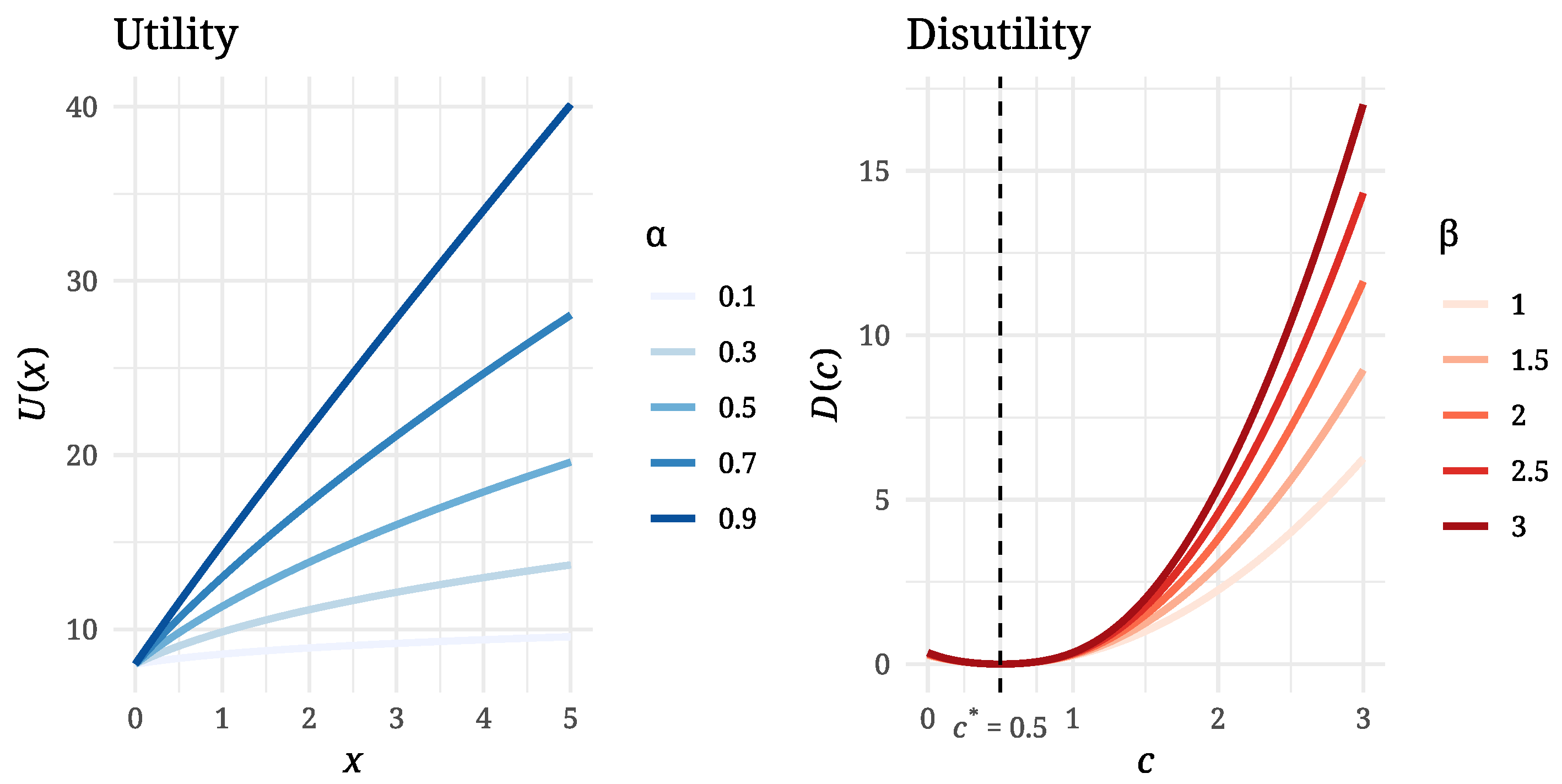
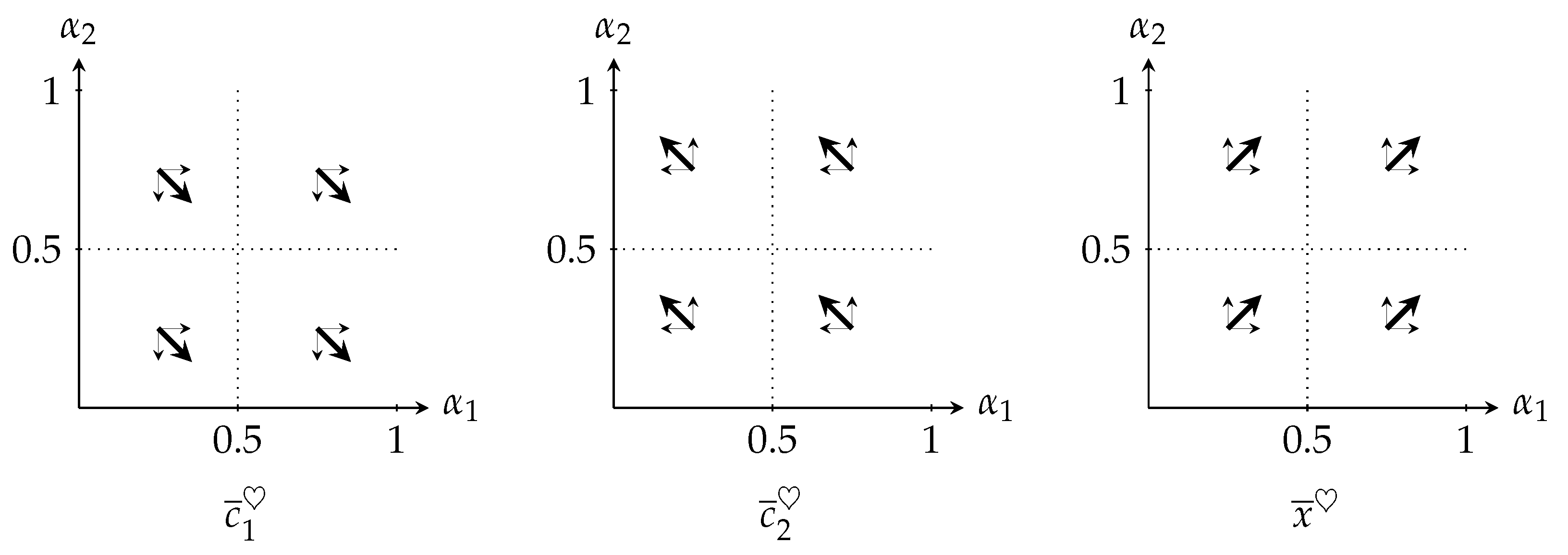
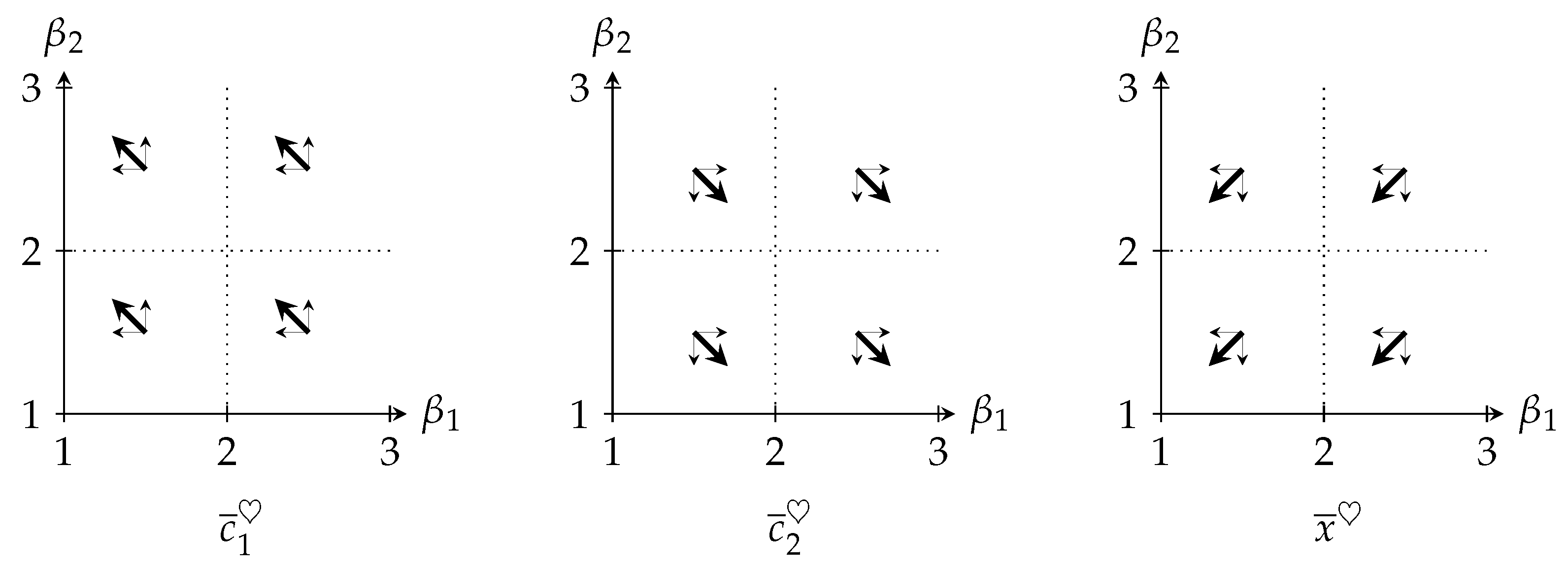
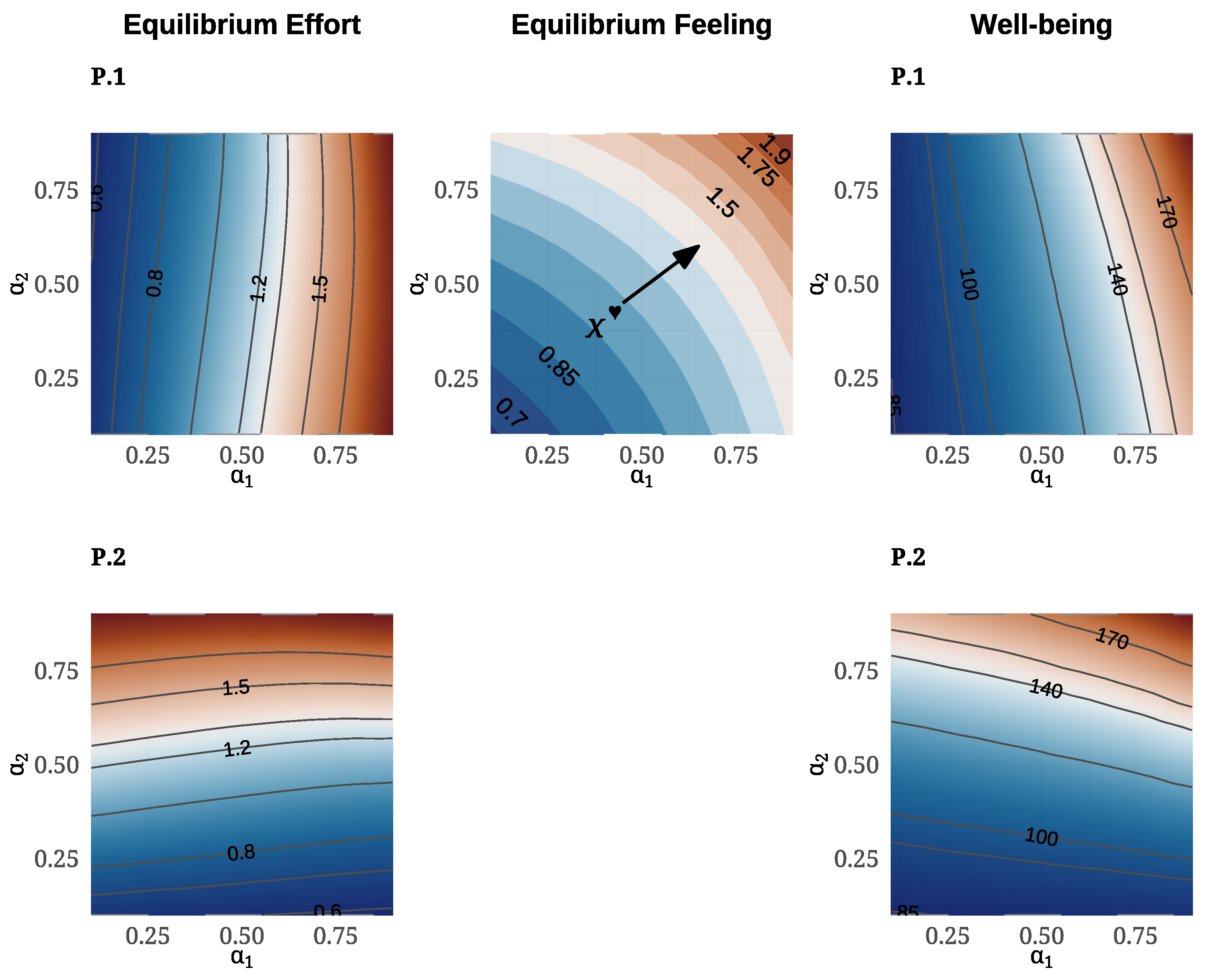
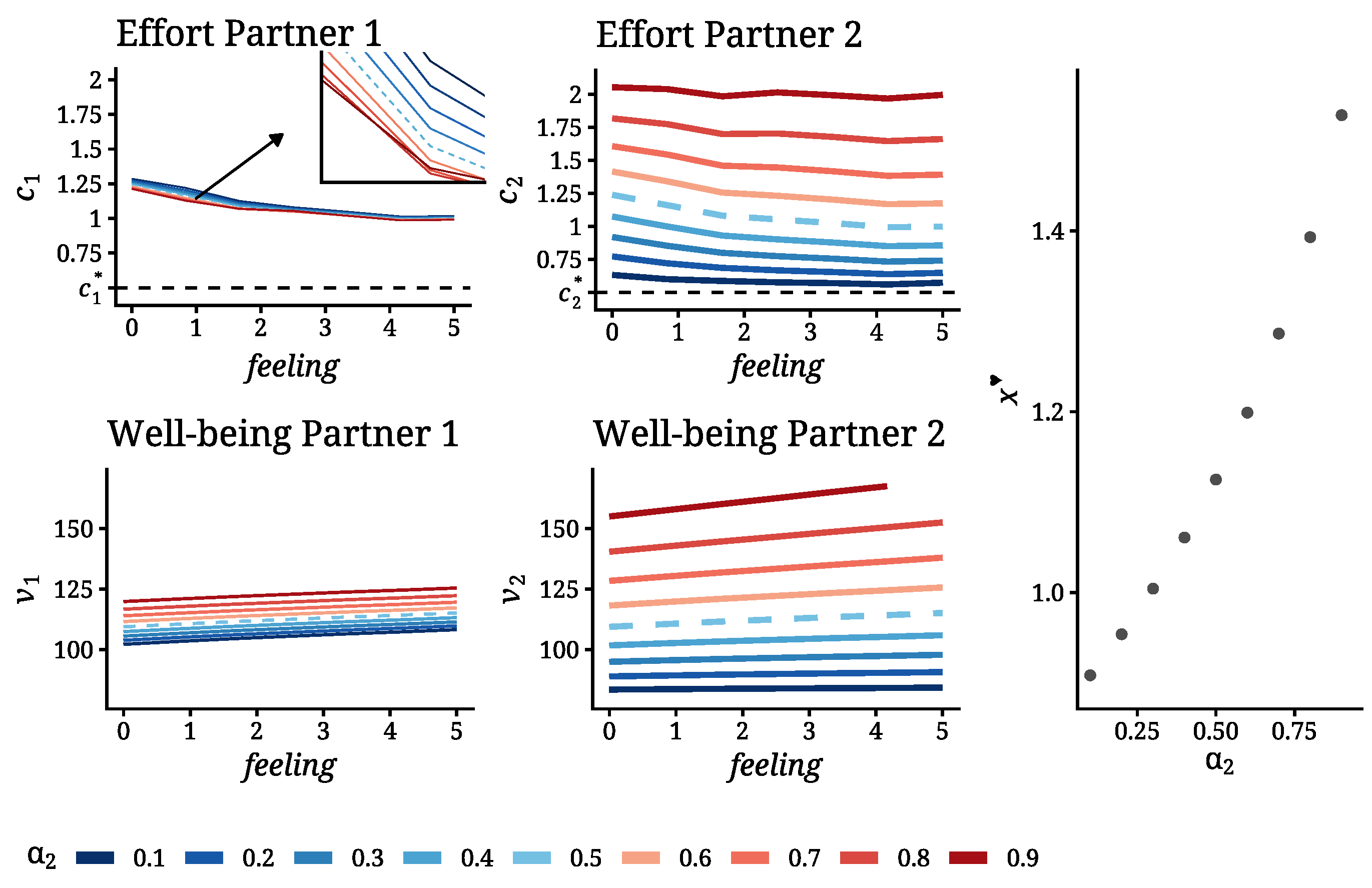
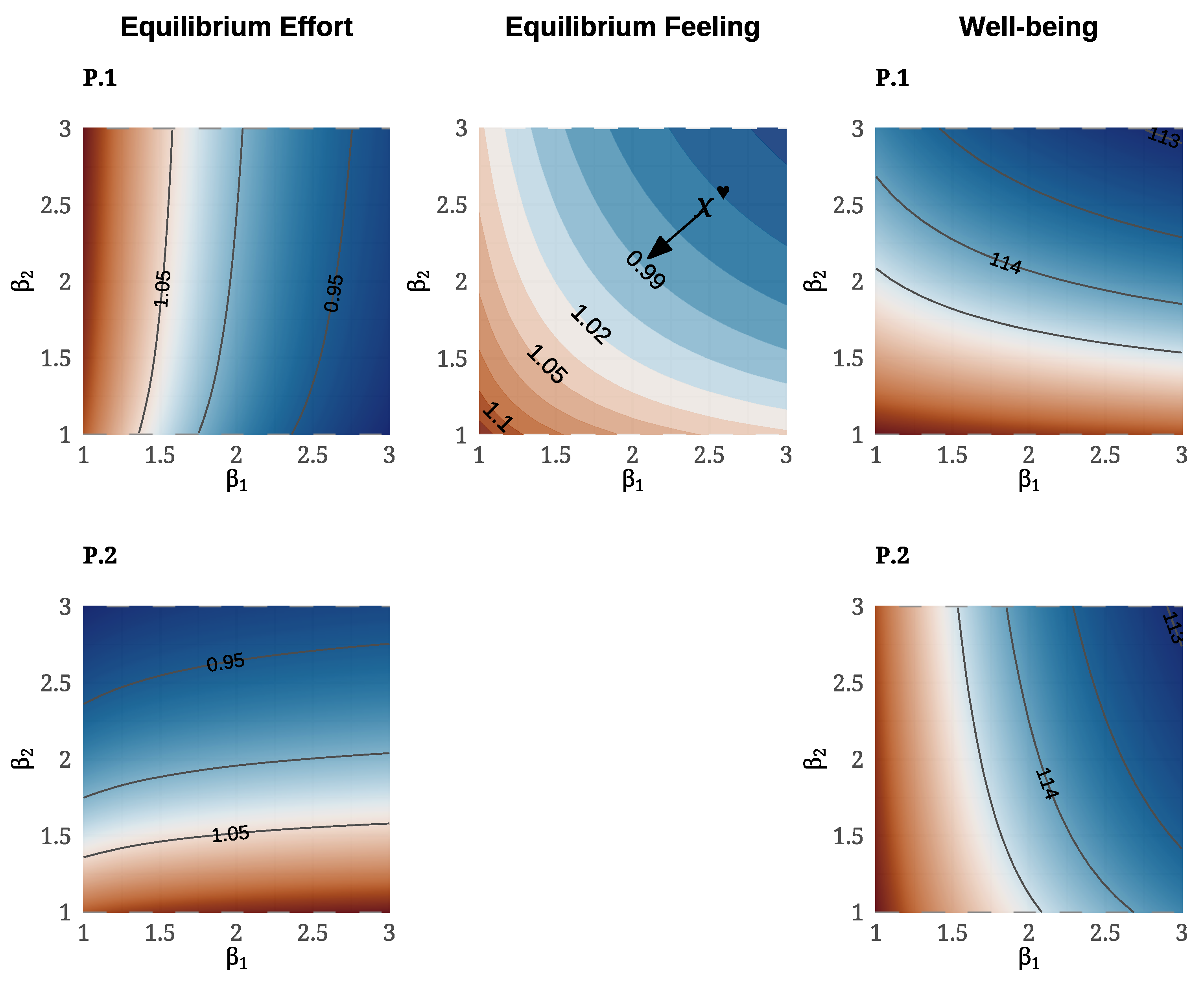
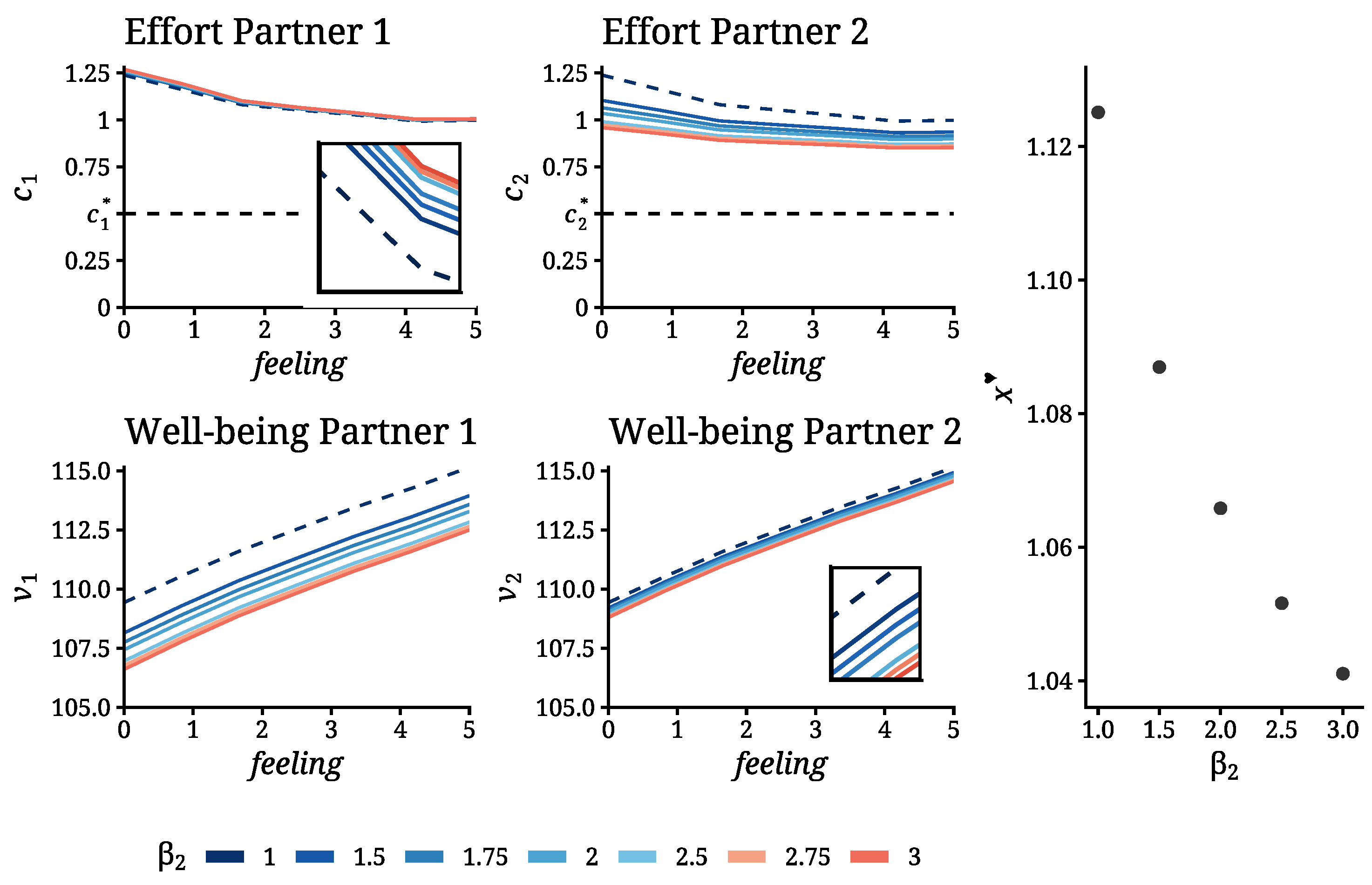



| i | r | x | ||||||||
|---|---|---|---|---|---|---|---|---|---|---|
| Values | 2 | 1 | 8 |
Disclaimer/Publisher’s Note: The statements, opinions and data contained in all publications are solely those of the individual author(s) and contributor(s) and not of MDPI and/or the editor(s). MDPI and/or the editor(s) disclaim responsibility for any injury to people or property resulting from any ideas, methods, instructions or products referred to in the content. |
© 2025 by the authors. Licensee MDPI, Basel, Switzerland. This article is an open access article distributed under the terms and conditions of the Creative Commons Attribution (CC BY) license (https://creativecommons.org/licenses/by/4.0/).
Share and Cite
Herrera de la Cruz, J.; Rey, J.-M. Emotional Trade-Offs in Successful Romantic Relationships: A Differential Game Approach. Mathematics 2025, 13, 3745. https://doi.org/10.3390/math13233745
Herrera de la Cruz J, Rey J-M. Emotional Trade-Offs in Successful Romantic Relationships: A Differential Game Approach. Mathematics. 2025; 13(23):3745. https://doi.org/10.3390/math13233745
Chicago/Turabian StyleHerrera de la Cruz, Jorge, and José-Manuel Rey. 2025. "Emotional Trade-Offs in Successful Romantic Relationships: A Differential Game Approach" Mathematics 13, no. 23: 3745. https://doi.org/10.3390/math13233745
APA StyleHerrera de la Cruz, J., & Rey, J.-M. (2025). Emotional Trade-Offs in Successful Romantic Relationships: A Differential Game Approach. Mathematics, 13(23), 3745. https://doi.org/10.3390/math13233745







